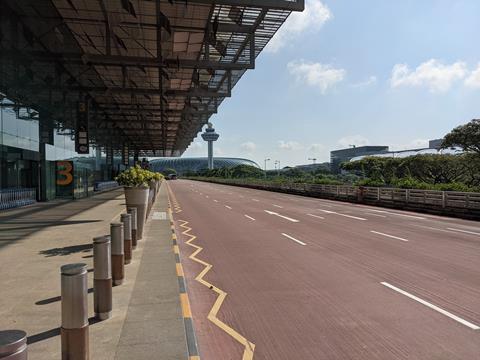Asia-Pacific carriers flew just 1.1 million international passengers in March, equivalent to 13% of passenger volumes in the year-ago period when travel began to sharply decline, preliminary figures by the Association of Asia Pacific Airlines (AAPA) show, a reflection of “dire operating conditions”.
International passenger markets remained weak amid border restrictions especially in the region, the uneven progress in vaccination rollouts and rapid resurgence in Covid-19 transmissions in some countries, particularly India, AAPA said in a 29 April press release.

Capacity, as measured in available seat-kilometres, averaged 27% of March 2020 volumes, as most of the region’s commercial passenger fleets remained grounded. International passenger load factor fell by 29.4 percentage points to average nearly 24% for the month, the association says.
Nonetheless, overall rising business confidence and e-commerce growth fuelled air cargo demand, with congestion at shipping ports spurring a shift to the speedier transportation of goods by air.
International air cargo demand, as measured in freight tonne-kilometres, grew by 16% year-on-year in March, making it the best performing month since December 2019. Offered freight capacity was up 13%, thus marking a 2.2 percentage point growth in the average international freight load factor to 74% for the month.
AAPA director general Subhas Menon states: “March marks a full year since the World Health Organization declared Covid-19 a pandemic. Asian airlines have been faced with major challenges over the past twelve months and have evolved their strategies to stay afloat, by adapting to changing demand patterns and diversifying their revenue base, whilst undertaking significant cost cutting measures. Much-needed government support has also helped the industry survive.”
“The recent commencement of travel between Australia and New Zealand is certainly a welcome step. In addition, quarantine-free travel between Singapore and Hong Kong, announced for end May, with talks of more travel bubbles in the pipeline, provide hope for a gradual restart of international air travel this year.”
“It is apparent that we will need to learn to live with Covid-19. As such, it is imperative that governments across the world embrace harmonised risk-based measures that safely reopen air travel. This includes digitalisation of travel health certificates, as well as the implementation of contactless and seamless travel measures in accordance with ICAO and WHO guidelines, to support travel recovery,” Menon adds.


























